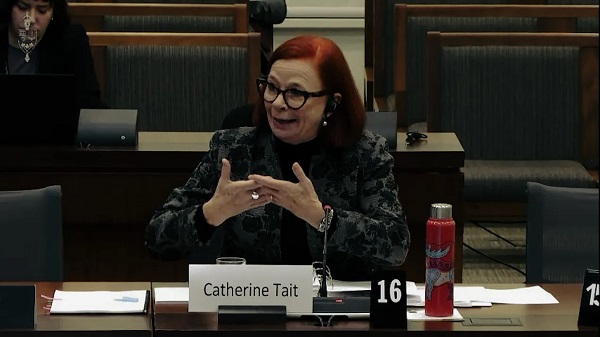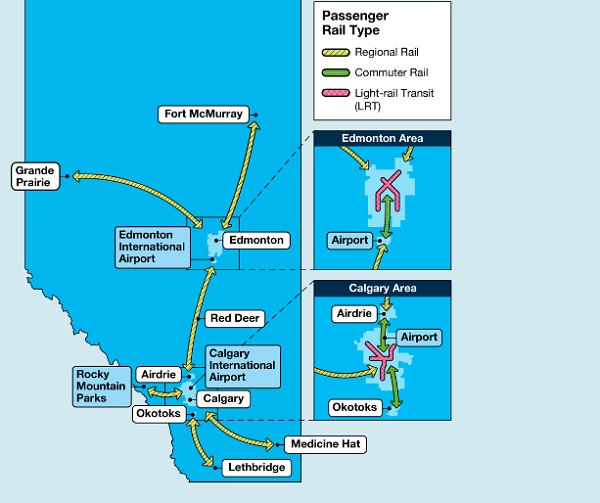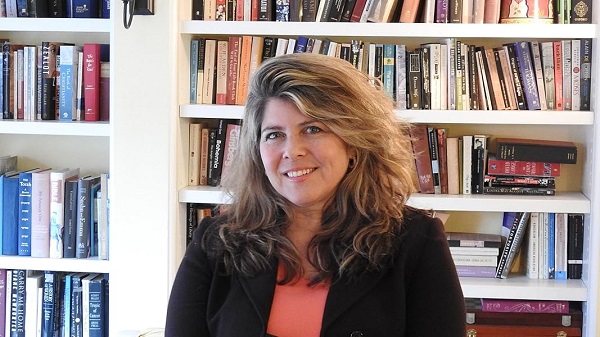International
There’s no scientific evidence of ‘human-induced climate change’ causing stronger hurricanes
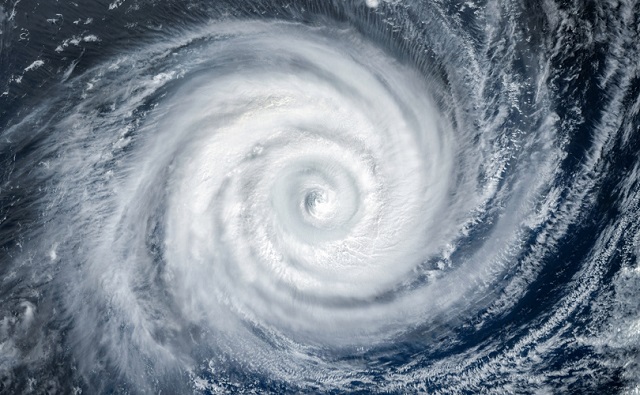
From LifeSiteNews
The scientific consensus on hurricanes, which isn’t covered by breathless climate reporting, is that humans have had no detectable impact on hurricanes over the past century. We must demand honesty and contextual complexity on climate reporting.
As Hurricane Beryl barreled its way across the Gulf of Mexico and into the U.S. mainland, the attention-getting headlines had beaten it there by a long shot – claims that it was a remarkable outlier were appearing in climate-frantic narratives more than a week earlier.
CBS News claimed it was “historic,” alongside headlines on “How to talk to your kids about climate anxiety.” The BBC reported that it was “the first hurricane to reach the category four level in June since NHC [National Hurricane Center] records began and the earliest to hit category five – the highest category – in July.” While technically true, and warranting some mention, the claims tend to misrepresent, by implication and association, the current scientific understanding of hurricanes and human impacts on climate change.
The scientific consensus on hurricanes, a consensus not covered by breathless reporting on climate, is that humans have had no detectable impact on hurricanes over the past century. The National Climate Assessment published by the U.S. Global Change Research Program, for instance, in Appendix 3 reads:
There has been no significant trend in the global number of tropical cyclones nor has any trend been identified in the number of US land-falling hurricanes.
So what’s actually going on? Is Beryl’s historic early arrival an indication of something fundamentally different about hurricane activity? Does it or does it not represent the bitter fruit of humanity’s ecological sins? The answer is almost certainly not. Rather, the hype around Beryl’s early arrival represents a major misunderstanding, a mass-bias phenomenon which sees evidence where evidence doesn’t really exist.
Historically speaking, of course, hurricanes are commonplace in the Gulf. “Hurricane” derives from the prehistoric Taíno name for the god of evil winds, Jurucán. The Spanish quickly adopted the name to describe the violent storms which wreaked such havoc on their exploratory efforts in the New World. Both the 1527 Narváez and 1539 De Soto expeditions, for example, were pummeled by hurricanes that may well have reached category five, had the NHC been around to classify them as such. So while it is conceivable that Beryl is a major anomaly and portent of evil tidings, it is very unlikely to be.
Instead, its media portrayal as Exhibit A in the case for anthropogenic climate change is fundamentally inaccurate. Today’s dire headlines are a perfect example of what Steve Koonin, in his book Unsettled, calls “the long game of telephone that starts with the research literature and runs through the [scientific] assessment reports to the summaries of the assessment reports and on to the media coverage.”
The media, he says, often end up distributing a narrative that is directly counter to the actual evidence. They do this partly from misunderstanding the scientific and statistical significance of observations, but mostly because extreme headlines fit a generally understood narrative. Such reports are far more likely to be recognized and absorbed by the news-reading public. This selective attention pushes a bias toward extremism in climate reporting that significantly inflames the political climate, to our collective detriment.
Not widely reported, for instance, are counter-narrative facts such as that since 2011, major hurricane counts have dropped below their 170-year average. Or the fact that the Great Barrier Reef, once a poster-child of climate doom, has now hit record levels of coral cover. It doesn’t take a great deal of imagination to picture what the headlines would read if these positive facts were reversed: “Major Hurricanes: Highest Number in Centuries!” or “Barrier Reef Records Lowest Coverage in Recorded History.” These are headlines we can easily envision, but have not seen, because they are entirely backward.
Instead, what happens is that reports which are technically true (like Beryl’s record early arrival) make it into the common current only if they fit the general alarmist narrative. The BBC perfectly exemplifies this in its coverage, noting that “Hurricane Beryl’s record-breaking nature has put the role of climate change in the spotlight.” It then goes on to say, toward the end of an article most people will never fully read:
The causes of individual storms are complex, making it difficult to fully attribute specific cases to climate change. But exceptionally high sea surface temperatures are seen as a key reason why Hurricane Beryl has been so powerful.
This is how the slight-of-hand works: BBC reporters, no doubt in interviews with hurricane experts, were obliged to quibble somewhat about the implications of Beryl’s record-setting classification. They properly note that it is “difficult” (impossible, in fact) to attribute Beryl’s record to climate change as such. And they are correct that high sea surface temperatures are a major factor in Beryl’s extraordinary rise. But it is the way these technical truths are presented that leads to errors in association. Very few casual readers would be likely to read the article, headlined with “How record-breaking Hurricane Beryl is a sign of a warming world” and not make an inductive leap to the causal inference of human-induced warming. This is a problem, because such an inference is in fact not substantiated by any scientifically accepted observations.
Now, to be sure, this works both ways. This is not a claim that human emissions have no impacts, after all, only that we must be very careful about what the evidence actually says before channeling it into policy recommendations. Nor is my point that we can safely disregard all negative reports about the environment, since there are clearly issues that warrant our genuine collective attention. For instance, I’ve played a bit of sleight-of-hand myself: I correctly noted that major hurricanes are below the historical average, but I did not highlight the fact that overall hurricane count is up. Likewise with the Great Barrier Reef: while coral coverage is remarkably up, the kind of monoculture coral crop accounting for the rise still leaves room for ecological concern.
The real point is that we must demand honesty, including contextual complexity, on climate reporting. Especially since the stakes are so high (either in matters of our environment or individual liberty), we cannot afford to play games with half-truths and obfuscations. Intelligent free people deserve fuller, more comprehensive, less-activist reporting on climate change. Beryl has made a record of sorts, yes. What that record really means in the context of human-induced climate change is fundamentally, scientifically unknown. Maybe that would be a better headline.
Reprinted with permission from the American Institute for Economic Research.
illegal immigration
Without A Reckoning, The First U.S. Terror Attack Caused By Open Borders Won’t Be The Last

From Todd Bensman from the Center for Immigration Studies as posted in The Federalist
Americans deserve a full-scale investigation into what happened in Chicago and how to prevent the next open-borders-enabled attack on U.S. soil.
Surprisingly little news coverage followed America’s first terror attack by an illegal border-crossing immigrant on U.S. soil. On Saturday, 22-year-old Mauritanian Sidi Mohamed Abdallahi was found dead of an apparent hanging suicide in his Cook County, Illinois jail cell. America must learn from this to prevent the next attacks on U.S. soil by border-infiltrating jihadists.
Abdallahi illegally jumped the border from Tijuana to San Diego in March 2023 and was freed by U.S. Border Patrol. Under orders from the Biden-Harris Department of Homeland Security, Border Patrol has released millions of illegal entrants into the United States in the last four years.
On October 26, Abdallahi allegedly hunted down and shot in the back an identifiably Orthodox Jewish man walking to synagogue, then tried to up the body count by attacking responding police while shouting “Allahu Akbar!” Abdallahi still didn’t quit shooting even after police wounded him. Somehow he, the police, and the victim all survived.
This benchmarking story of America’s first terror attack by a border-crossing jihadist was largely ignored by national news media even though it came just before the brewing political war between pro-illegal immigrant Democrats and an incoming Trump administration promising an illegal immigration crackdown largely on national security grounds.
Now there will not even be a trial. Abdallahi’s sudden exit is no doubt privately regarded as a gift to pro-open borders advocates, their media sympathizers, and Democrat elected officials. But independent media and elected government must press for further details to prevent the next border-crossing terrorist attack.
What We Know So Far
At a late November arraignment reported on by a Chicago Fox News affiliate and the Chicago Sun-Times, prosecutors revealed that, while working at an Amazon warehouse, Abdallahi carefully planned his attack on Jewish targets due to jihadist ideology.
“This was not anything but a planned attack…an attempted assassination of these people,” Assistant State’s Attorney Anne McCord Rodgers told the court. “This was a calculated plan, on a public street…and attempted slaughter of that person and law enforcement officers.”
Abdallahi had mapped out the locations of two Chicago synagogues and a Jewish community, the conservative Chicago Sun-Times reported November 21. The search history also included “Jewish Community Center” and a gun store in suburban Lyons.
Once he shot the man in the back, Abdallahi displayed a relentless desire to increase his body count and seemed tactically aware of how to take out hard human targets like police officers. For example, his gun apparently jammed after shooting the Jewish victim, prosecutors said. He reportedly had the presence of mind to retreat to cover, fix the jam, then return to finish off the victim, but then retreated to cover again as first responders approached.
Abdallahi drove a few blocks around them, then returned on foot from a new direction and opened fire on four police officers and two paramedics tending the wounded man, prosecutors alleged. He then allegedly fired on the ambulance, hitting it twice as a fifth police officer returned fire.
Wounded, finally, Abdallahi fell. But he rose repeatedly to allegedly fire on the police even more before finally collapsing. Miraculously, none of his intended victims were hit.
This Case Has National Implications
The untold full story of Abdallahi’s illegal border crossing and attack in Chicago the next year, of course, goes beyond the evidence so far showing Abdallahi followed a violent ideology. Americans can no longer regard the possibility of Islamic terrorist infiltration from the southern border as merely a hypothetical bogeyman. Because of Chicago, no longer can the warnings of homeland security professionals like those quoted in my America’s Covert Border War book be dismissed as anti-immigrant fearmongering.
This terror attack and police gunbattle with an alleged border-crossing jihadist instead firmly justifies bipartisan public inquiry, public and private investigation, and analysis about border security policy that can stop future Abdallahis. After September 11, 2001, America justifiably worried about fixing the broken U.S. visa systems that 9/11 hijackers easily defrauded to enter the United States for that larger attack.
So far, the institutional media and government powers-that-be have managed to box up the Chicago incident as a mere local affair. It’s not even charged as a federal terrorism case.
Under pressure from Chicago’s Jewish community for Chicago officials to publicly acknowledge that a local Jewish man was violently attacked based on his religion, Cook County’s far-left, George Soros-backed State’s Attorney Kim Foxx (who leaves office next year) eventually charged Abdallahi with terrorism, under Illinois’ circa-9/11 terrorism statute.
This case demands intense national attention. Chicago’s attack is an uncontestable confirmation of the terrorism threat inherent in open borders policies. President Donald Trump promised throughout his campaign to reverse Democrats’ open border, catch-and-release policies. Yet open-borders advocates are organizing to wage political, information, and legal warfare to defeat Trump’s enforcement of U.S. immigration laws. Front-and-center attention on the Chicago terrorist attack would provide Americans the context they deserve during the melee over Trump’s planned illegal immigration fixes.
If the Chicago terror attack is allowed to fade away after Abdallahi’s burial, Americans will have been robbed of their ability to loudly petition for protection from the next such terror attack. The next attack could easily target the towns now vowing to “Trump-proof” themselves against policies that would deport other Abdallahis before they also can attack.
Questions Americans Deserve Answered
Failing to investigate this incident will likely leave the doors open to more such attacks. So far, there’s been no public sign of FBI or Department of Justice involvement in the Chicago case, as would be ordinary when Islamic terrorism is indicated in any attack on U.S. soil.
Ceding this case entirely to state and local authorities with less counterterrorism training and intelligence resources leaves too much on the table. For example: are co-conspirators or sympathizers who urged Abdallahi on still out there? Did foreign terrorism masters direct Abdallahi? Chicago police may be well-meaning and reasonably resourced, but counterterrorism is the FBI’s unique province.
If the bureau is not involved, why not? If it is, good, but to what extent did the FBI follow leads and intelligence and provide the results to Chicago PD (which may not hold the security clearances to ingest such information)? Might Chicago, a sanctuary city, even have refused to collaborate with the FBI for partisan reasons during a hotly contested presidential campaign?
Abdallahi reportedly did not flag on any terrorism or criminal databases when Border Patrol detained him in San Diego Sector. Was he ever detained and referred to the Border Patrol’s Tactical Terrorism Response Team or Immigration and Customs Enforcement intelligence officers for extended terrorism-related interviews? That is supposed to happen with “special interest aliens,” who get assigned that tag if they hail from designated countries of terrorism concern like Mauritania.
According to material obtained by the Center for Immigration Studies through a Freedom of Information Act request, Border Patrol apprehended 18,260 Mauritanians illegally crossing the U.S. southern border from 2021 through December 2023. ISIS, al-Qaeda, al-Mourabitoun, and other violent Islamist groups operate throughout the Sahel region of northwest Africa, which includes Mauritania, according to many credible sources about international terrorism.
Face-to-face interviews with Mauritanians and all other special interest aliens can be the difference between deporting a dangerous terrorist or letting one into the country. Have those happened with those 18,260 Mauritanians admitted to the U.S. in just three years? Will they?
Abdallahi is dead. But his case presents a rare opportunity for the traditional bastions of government accountability to get interested and get to work with this last question in mind: Is a Jewish Chicagoan the first American to be shot by a border-crossing jihadi, or the last?
Business
From Smug to Subservient, Justin Trudeau Bows to MAGA Realities at Mar-a-Lago
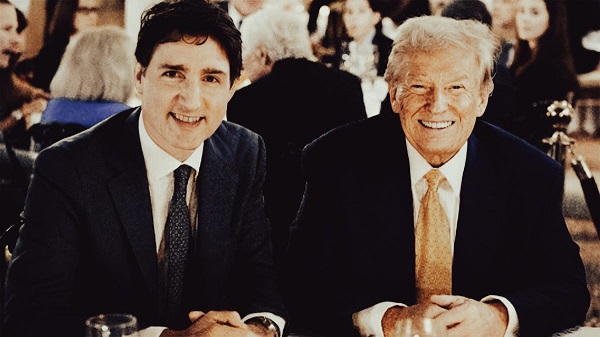
After years of mocking Trump and betting on a woke Washington, Trudeau now finds himself groveling to save Canada’s economy from MAGA’s hardball tactics.
Justin Trudeau has spent years mocking and deriding the MAGA movement, banking on a continuation of woke, progressive leadership in Washington. He bet everything on a Kamala Harris presidency, believing the days of Donald Trump’s America-first agenda were a distant memory. Now, with Trump back in office, Trudeau finds himself groveling at Mar-a-Lago, trying to salvage what’s left of Canada’s crumbling economic future.
This is the same Justin Trudeau who painted MAGA as a dangerous fringe movement, aligning himself with global elites and lecturing Americans on their supposed moral failings. He openly scoffed at Trump’s tariffs, his immigration policies, and his tough-on-China stance. Trudeau’s bet? That a Democrat-controlled America would reward his sycophantic pandering with favorable trade deals and continued subsidies for his progressive fantasies.
But Trudeau’s gamble failed. Trump is back, and Trudeau’s entire house of cards is collapsing. Canada’s economy, propped up by unfair trade advantages and U.S. energy consumption, is suddenly exposed. The 25% tariff threat on Canadian imports has Trudeau scrambling, not with bold leadership, but with empty promises and nervous laughter at Mar-a-Lago.
In a moment of pure irony, Trudeau, who once lectured Trump about values, now finds himself kneeling to kiss the ring. MAGA, what? Gone is the smug defiance, replaced by desperate platitudes about border security and economic cooperation. But let’s be clear: Trudeau isn’t there to protect Canadian interests; he’s there to save face. His government is woefully unprepared for Trump’s hardball tactics, and the Prime Minister’s office knows it.
During a recent dinner at Mar-a-Lago, President-elect Donald Trump reportedly suggested that Canada could become the 51st U.S. state if it couldn’t handle the economic impact of proposed tariffs. This remark came after Prime Minister Justin Trudeau expressed concerns that a 25% tariff on Canadian imports would “kill” Canada’s economy.
Trump’s comment underscores the significant economic interdependence between the two nations. In 2022, trade between the U.S. and Canada exceeded $900 billion, with the U.S. accounting for 63.4% of Canada’s global trade. This deep economic integration means that shifts in U.S. trade policy can have profound effects on Canada’s economy.
Trump’s quip about Canada becoming the “51st state” wasn’t just a joke; it was a power move, a reminder of who holds the cards in this relationship. While Trudeau nervously laughed, the message was clear: Canada needs the U.S. far more than the U.S. needs Canada. Trudeau’s weakness has brought us here. Instead of securing energy independence, he’s strangled Alberta’s oil industry with crippling regulations. Instead of standing up to China, he’s kowtowed to Beijing while relying on U.S. trade to keep his agenda afloat.
And now, Trudeau is at the mercy of a man he spent years mocking. Trump’s tariffs are a direct consequence of Trudeau’s inability to lead. His failure to address illegal immigration and the fentanyl crisis has made Canada not just a bad neighbor, but a liability.
Trudeau’s Liberals have always been more concerned with appearances than action, more focused on virtue signaling than real governance. But now, the bill has come due. And the man holding the ledger is none other than Donald J. Trump.
So here we are: Justin Trudeau, the woke globalist, reduced to pleading for mercy at Mar-a-Lago. His smugness replaced by desperation, his rhetoric exposed as hollow. MAGA what, indeed.
Subscribe to The Opposition with Dan Knight .
For the full experience, upgrade your subscription.
-
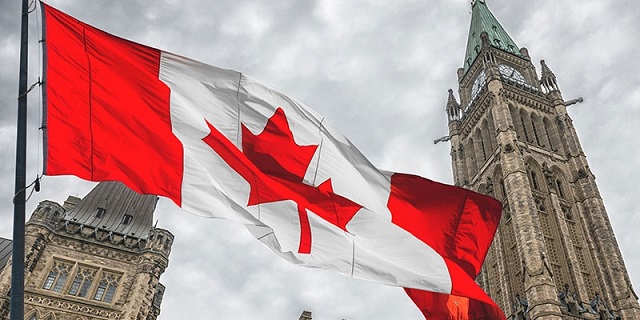
 David Clinton2 days ago
David Clinton2 days agoWhat Happens When Ministries Go Rogue?
-
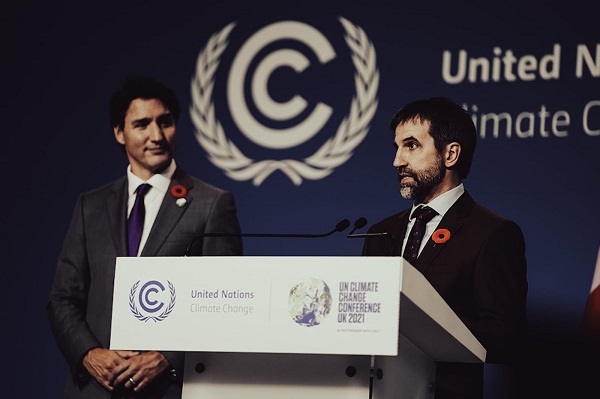
 Automotive2 days ago
Automotive2 days agoNorthvolt bankruptcy ominous sign for politicians’ EV gamble
-

 Crime2 days ago
Crime2 days agoWhat did Canada Ever Do to Draw Trump Tariff on Immigration, You Ask? Plenty
-
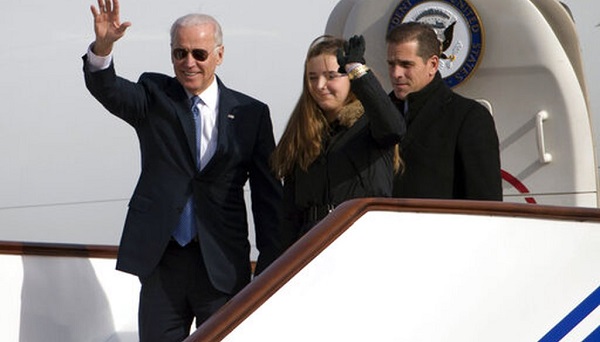
 Daily Caller2 days ago
Daily Caller2 days agoCNN’s Scott Jennings Says History Will Remember Biden As ‘Complete And Total Disgrace’ Over Hunter Pardoning
-
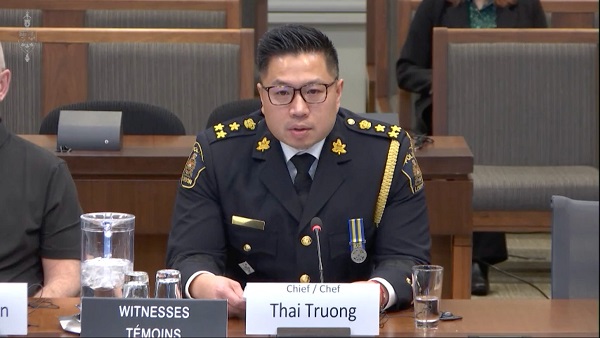
 Addictions2 days ago
Addictions2 days agoLondon Police Chief warns parliament about “safer supply” diversion
-
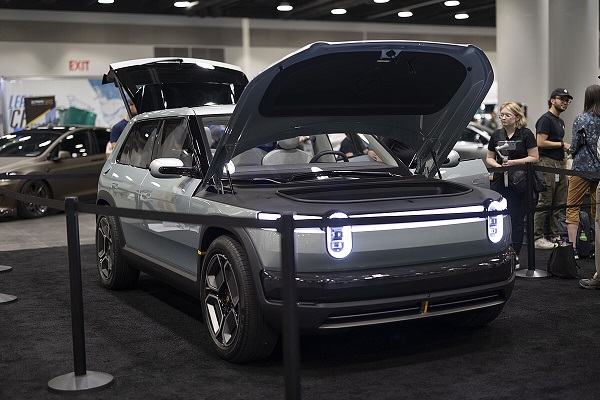
 Automotive2 days ago
Automotive2 days agoElectric-vehicle sales show modest spark
-
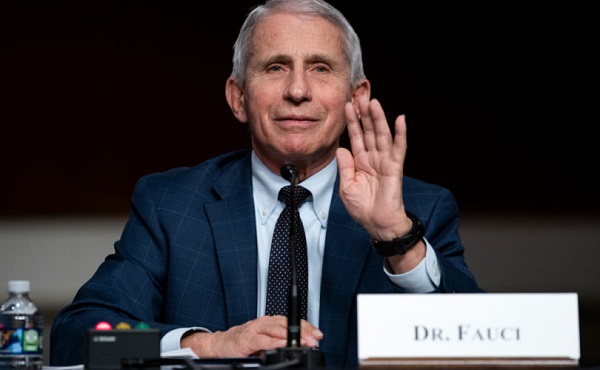
 Health2 days ago
Health2 days agoFauci admitted to RFK Jr. that none of 72 mandatory vaccines for children has ever been safety tested
-

 Daily Caller2 days ago
Daily Caller2 days ago‘Dark Day’: Another Western Country Backs Doctor-Assisted Suicide, Opens Door To ‘Murder Of Old And Sick’




